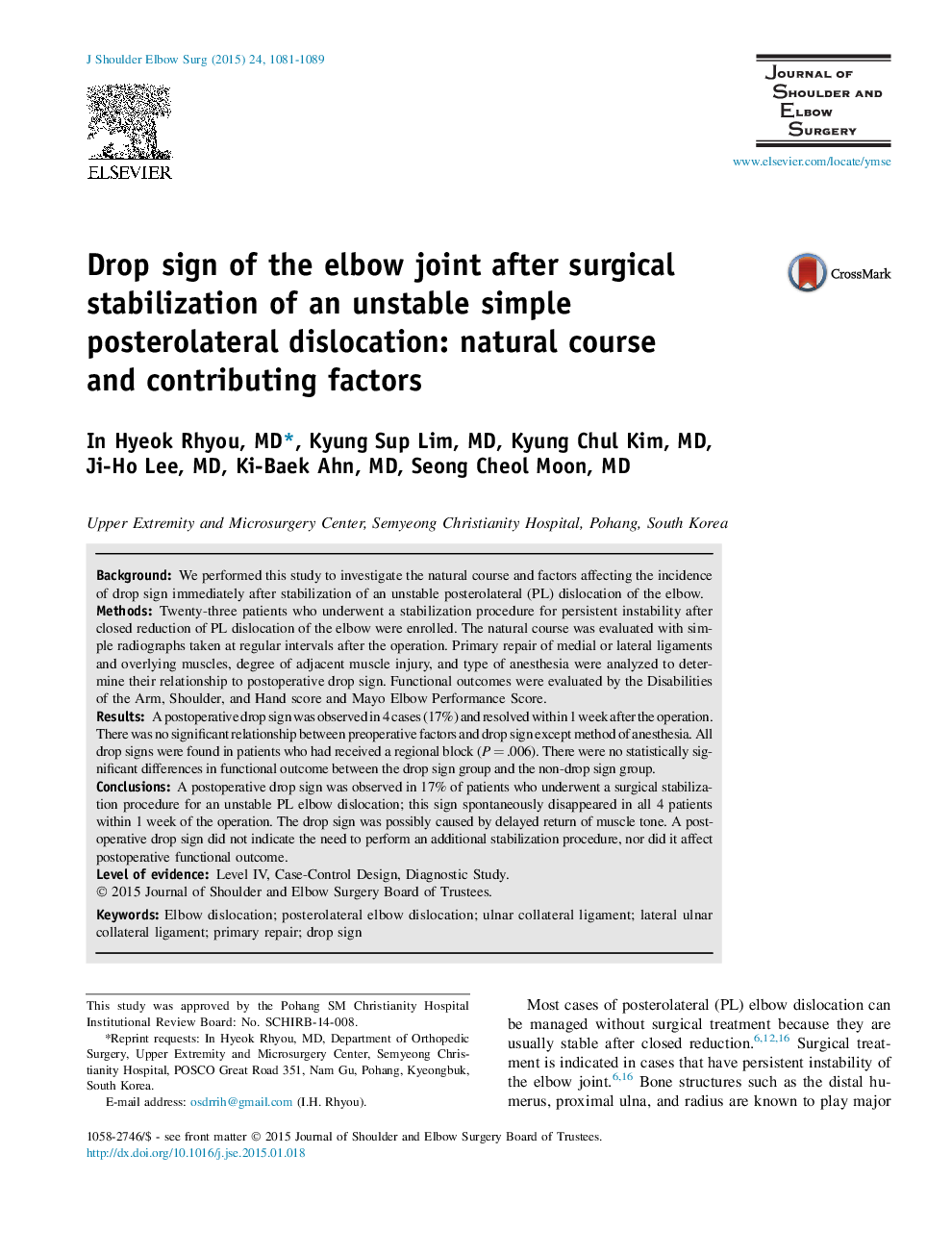| Article ID | Journal | Published Year | Pages | File Type |
|---|---|---|---|---|
| 4073392 | Journal of Shoulder and Elbow Surgery | 2015 | 9 Pages |
BackgroundWe performed this study to investigate the natural course and factors affecting the incidence of drop sign immediately after stabilization of an unstable posterolateral (PL) dislocation of the elbow.MethodsTwenty-three patients who underwent a stabilization procedure for persistent instability after closed reduction of PL dislocation of the elbow were enrolled. The natural course was evaluated with simple radiographs taken at regular intervals after the operation. Primary repair of medial or lateral ligaments and overlying muscles, degree of adjacent muscle injury, and type of anesthesia were analyzed to determine their relationship to postoperative drop sign. Functional outcomes were evaluated by the Disabilities of the Arm, Shoulder, and Hand score and Mayo Elbow Performance Score.ResultsA postoperative drop sign was observed in 4 cases (17%) and resolved within 1 week after the operation. There was no significant relationship between preoperative factors and drop sign except method of anesthesia. All drop signs were found in patients who had received a regional block (P = .006). There were no statistically significant differences in functional outcome between the drop sign group and the non-drop sign group.ConclusionsA postoperative drop sign was observed in 17% of patients who underwent a surgical stabilization procedure for an unstable PL elbow dislocation; this sign spontaneously disappeared in all 4 patients within 1 week of the operation. The drop sign was possibly caused by delayed return of muscle tone. A postoperative drop sign did not indicate the need to perform an additional stabilization procedure, nor did it affect postoperative functional outcome.
